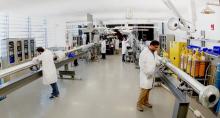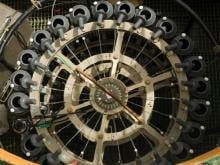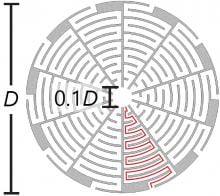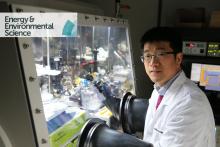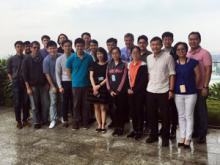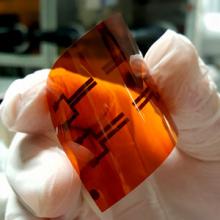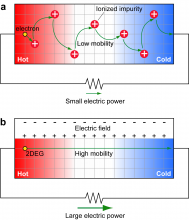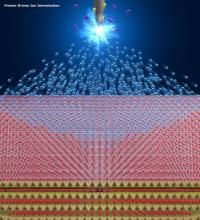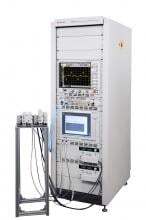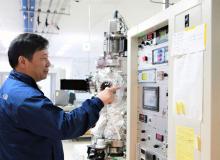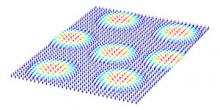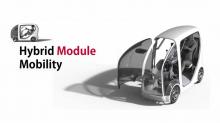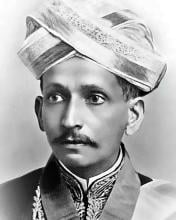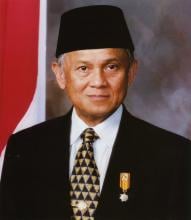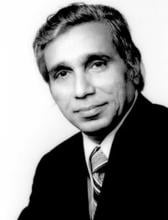Technology
News
27 Nov 2017
Turbulence and nutrient availability drive changes in Red Sea microbes.
27 Nov 2017
A loudspeaker design could allow small devices to produce powerful low-frequency sounds.
24 Nov 2017
A research team from Korea succeeded to develop a technology to produce environmentally friendly water-borne semiconductor inks using surfactant. The result is expected to be applied to various electronic devices with a semiconductor surface control technique.

22 Nov 2017
Ten visionaries from Singapore, Australia and Taiwan honoured

21 Nov 2017
The InterAcademy Partnership (IAP) today releases a Statement ‘Science and Technology for Disaster Risk Reduction’. Developed by a working group of experts nominated by academies of science from around the globe, the Statement itself has been endorsed by IAP's member academies.
20 Nov 2017
Korean and American researchers develop a new method for making extremely short pulse lasers that could lead to precision eye surgery and material processing.
20 Nov 2017
Physicists are playing unexpected roles in meeting future global energy challenges by modeling technologies such as fracking.

20 Nov 2017
Sealed sulfur particles show promise for renewable energy storage technology.
20 Nov 2017
Low-energy X-rays are surprisingly effective at killing bacterial spores, offering improved sterilization techniques.
20 Nov 2017
A simple technique for mass producing ultrathin, high-quality molybdenum trioxide nanosheets could lead to next-generation electronic and optoelectronic devices.
20 Nov 2017
Novel approach utilizes high mobility two-dimensional electron gas, boosting thermoelectric conversion efficiency.

18 Nov 2017
Industrial Transformation ASIA PACIFIC to premiere on 16–18 October 2018 at the Singapore EXPO Convention and Exhibition Centre
17 Nov 2017
A team of Hokkaido University researchers has developed a novel material synthesis method called proton-driven ion introduction (PDII) which utilizes a phenomenon similar to “ion billiards.” The new method could pave the way for creating numerous new materials, thus drastically advancing materials sciences.
14 Nov 2017
Qatar University (QU) colleges of Business and Economics (CBE) and Engineering (CENG) launched the “Innovation & Entrepreneurship Contest 2017” at a press conference held on November 12 at QU.
09 Nov 2017
Tohoku University collaborates with Keysight Technologies Inc. on STT-MRAM test solution for MTJ

09 Nov 2017
Predicting Customer Behaviour through Analytics
06 Nov 2017
A research team from Korea has improved the luminance of electroluminescent devices by 422% compared to the conventional ones by applying retro-reflection electrodes The result is expected to be applied in next generation display and signage lighting technology

03 Nov 2017
Call for Papers - submission deadline 15 December 2017

03 Nov 2017
In a world where machines think, and Google has all the answers, how can we maximise human potential and be prepared for the jobs of the future?

02 Nov 2017
Is our current education system effectively preparing today’s students for tomorrow’s workforce?
01 Nov 2017
An innovative technique for making tunable magnetic skyrmions could lead to next-generation memory and computing technologies.

01 Nov 2017
A system that identifies malicious patterns in network traffic could help create a more secure internet.

01 Nov 2017
Technology and customer value delivery key business differentiators, finds Frost & Sullivan at GIL:Asia-Pacific 2017

30 Oct 2017
E-book available
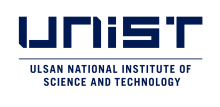
25 Oct 2017
A professor, affiliated with South Korea's Ulsan National Institute of Science and Technology (UNIST) has recently been recognized by the Korean Ministry of Land, Infrastructure and Transport (MOLIT).

25 Oct 2017
South Korea's Ulsan National Institute of Science and Technology (UNIST) has recently held the official signboard-hanging ceremony of the Explanable Artificial Intelligence Center.

25 Oct 2017
A professor, affiliated with South Korea's Ulsan National Institute of Science and Technology (UNIST), has been selected as an outstanding R&D project of 2017 in South Korea.
25 Oct 2017
A design team in South Korea has revealed a new self-charging electric bike design concept “Hybrid Module Mobility”.
25 Oct 2017
A new, advanced waterless energy-producing toilet system ‘BeeVi Toilet' developed by researchers in South Korea.
Researchers
Sorry, no researchers coming up for this topic.
- « first
- ‹ previous
- 1
- 2
- 3
- 4
Giants in history
Turkish astrophysicist Dilhan Eryurt (29 November 1926 – 13 September 2012) conducted research on how the sun affects environmental conditions on the moon.
Sir Mokshagundam Srinivasa Shastry Vishveshwarayya (15 September 1860 – 14 April 1962) is widely regarded as India’s most outstanding engineer. In a career that spanned almost his entire life, Vishveshwarayya played a pivotal role in several engineering projects, including designing the Krishnarajasagara dam that is still the source of irrigation and drinking water for parts of Karnataka today.
Physicist Narinder Singh Kapany (31 October 1926 – 4 December 2020) pioneered the use of optical fibres to transmit images, and founded several optical technology companies. Born in Punjab, India, he worked at a local optical instruments factory before moving to London for PhD studies at Imperial College. There, he devised a flexible fibrescope to convey images along bundles of glass fibres.
Bacharuddin Jusuf Habibie (25 June 1936 – 11 September 2019) was an Indonesian engineer who was President of Indonesia from 1998 to 1999.
A Japanese surgeon, Tetsuzo Akutsu (20 August 1922 – 9 August 2007) built the first artificial heart capable of keeping an animal alive.
Fazlur Rahman Khan (3 April 1929 – 27 March 1982) was a Bangladeshi-American structural engineer and architect who invented the tube principle, which formed the basis for modern skyscraper design.
Lin Lanying (7 February 1918 – 4 March 2003) was a Chinese material engineer remembered for her contributions to the field of semiconductor and aerospace materials. Lanying was born into a family who did not believe in educating girls and she was not allowed to go to school.
Gregorio Y. Zara (8 March 1902 – 15 October 1978) was a Filipino engineer and physicist best remembered for inventing the first two-way video telephone. Zara’s video telephone invention enabled the caller and recipient to see each other while conversing, laying the foundation for video-conferencing


